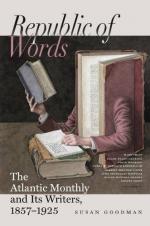In modern times, the sheep of Spain have been introduced into France and Germany, and from them have sprung the French merino and Saxony varieties. These again have been exported to Natal and Australia.
Before the American Revolution, the sheep of this country furnished a wool so coarse that English travellers reported that America could never compete with England in broadcloth. But when the French armies overran Spain, the vast flocks of merinos which annually traversed the country in search of fresh pasturage were driven into Portugal, and by the enterprise of Messrs. Jarvis, Derby, and Humphrey, large numbers of them were imported into our Northern States. These have improved our wool, until now it surpasses the English in fineness.
The fine-wool sheep thrive most in a dry climate and elevated country. We learn from Strabo, Columella, and Martial, that the fine wool of Italy was raised principally among the Apennines; and in Spain, Estremadura, a part of the ancient Baetica, is still famous for its wool. There the Spanish flocks winter, and thence in spring are sent to pasture in the mountains of Leon and Asturias. Other flocks are led in the same season from great distances to the heights of the Sierra Morena, where the vegetation is remarkably favorable to improvement of the wool.
In this country, the elevated lands of Texas and New Mexico are admirably adapted to the fine-wool sheep; and upon the head-waters of the Missouri and the Yellowstone is another district much resembling the Spanish sheep-walks, where the mountain-sheep and the antelope still predominate.
When Caesar invaded England he found there great numbers of flocks, and for many centuries wool was the great staple of English exports; but during the reign of Queen Elizabeth numerous artisans were driven from Brabant and Flanders by the Duke of Alva, and the manufacture of wool, which had enriched the Low Countries, was permanently established in England.
With the progress of agriculture, the turnip-culture enabled Great Britain to increase the number of her sheep; but they were raised more for the market than for their fleeces, which were rarely fine, and the demand for wool soon exceeded the supply. England then opened her ports to the free importation of wool from every region, and now annually manufactures two hundred millions of pounds, twice the amount manufactured in this country, of which two-thirds are drawn from distant lands, and her export of woollens for 1860 exceeded one hundred millions of dollars.
The same policy which has built up this vast manufacture, namely, the free importation of the raw material and of every article used in its manufacture, with a moderate duty on foreign cloths, will enable us to compete with England. Our farmers’ wives prefer the sheep-husbandry to the care of the dairy; much of our land furnishes cheap pasturage, and the prices of mutton are remunerative; but many of the low grades of wool come from abroad, and the mill-owner will not embark largely in the manufacture, unless he can purchase his materials as cheaply as his foreign competitor.




